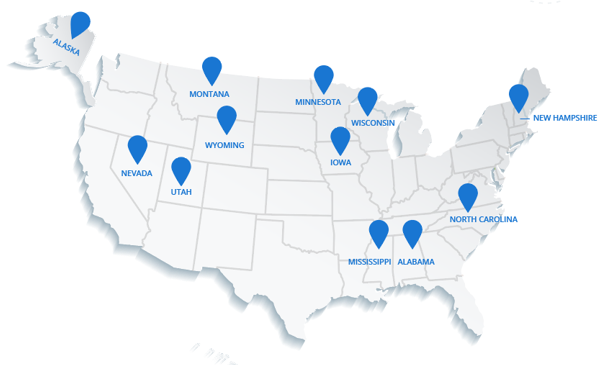Execution is where the rubber meets the road on your path to becoming an exceptional NP leader. Here's why striving to achieve important goals for your organization is a great investment in your own career.
Healthcare organizations need competent and compassionate NPs who can bring about positive change. A missing piece to the leadership puzzle is the ability to make progress toward organizational goals. For most healthcare organizations, these goals are focused in five main business areas:
- employee engagement
- revenue impact/affordable care
- quality and safety
- growth and innovation
- the patient experience.
Effective leaders know that their professional success is closely tied to achievement in one or more of these areas.
NP Leaders: Make it Your Goal to Find the Right Problem to Solve
How do you know which of these goals will have the most strategic impact on your organization and also benefit your Advanced Practice Providers (APPs)? Look around and identify specific areas for improvement. Do you have an effective leadership structure? Are you accurately capturing the billing for your APPs? Do you have a strong organization-wide education program that can be adapted for each unit? Assess your practice environment to identify a goal worth pursuing.
Create a Strategic Roadmap to Move Forward
To the extent that you have a clear vision and goal, you can create a strategic roadmap. As you think about what you want to accomplish, talk to other Advanced Practice leaders. Find out what some of their strategic initiatives are and what they're doing to work toward them. Creating a strategy can be challenging, so stay receptive to many different ideas. Engage people who have unique perspectives. Once you have your goals in place, you'll need to identify the milestones you have to hit to achieve each of those goals. Break those milestones down into tasks and projects. This step will offer clarity and help you recognize the capabilities you need.
Involve Your Colleagues to Accomplish More, Faster
Next, figure out who can help you. This might be the people who report to you, your Advanced Practice advisory group, or other leaders within the organization. Creating a flexible team of people with different skill sets in the organization will go a long way to helping you achieve your goals. For example, if one of your goals is to initiate billing for APPs within the organization, most likely you'll need capabilities of business analysts, data analysts, and then potentially other business people or APP leaders who are good at problem-solving and executing a plan. As an NP Leader in this situation, your role is to build a team around the goal, to map out a process to achieve it, then to help each person understand what his or her role is. A collaborative model will allow you to execute more effectively and achieve more. By involving others, you won't be limited by your own capabilities and the time you have available. It's very common for leaders to assume full responsibility for the project, and bear the burden alone. The truth is that you don't have to solve everything. An effective leader brings people together with different capabilities to solve problems.
Reap the Rewards of a Goal Achieved
When you clarify your goals, create a roadmap, and build teams, you have the opportunity to achieve your professional goals while moving the organization forward. In the process, you will support the APPs who are counting on you and you can derive a high level of personal satisfaction from the process.
NP Leaders: Are Your Values Leading You to a New Career?
If you're looking to make a career change, we'd love to help you. Review our current job opportunities below and create your free DirectShifts Profile.
- Family Nurse Practitioners | Telehealth & Hospital
- Psychiatric Mental Health Nurse Practitioners | Telehealth & Hospital
- Nurse Practitioners | Telehealth & Hospital | Bilingual
- Home Health Nurse Practitioner
- Nurse Practitioners and Physician Assistants Needed
This article was originally published on Melnic by Jill Gilliland. Melnic was recently acquired by DirectShifts.
.png?width=50&height=50&name=Cube-Logo-150x150%20(1).png)
July 13, 2022




Comments